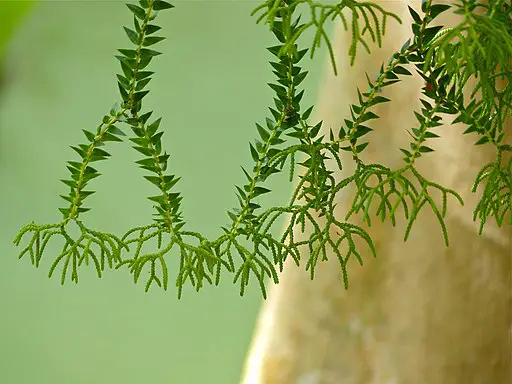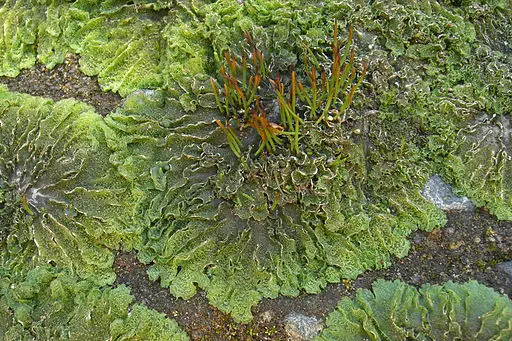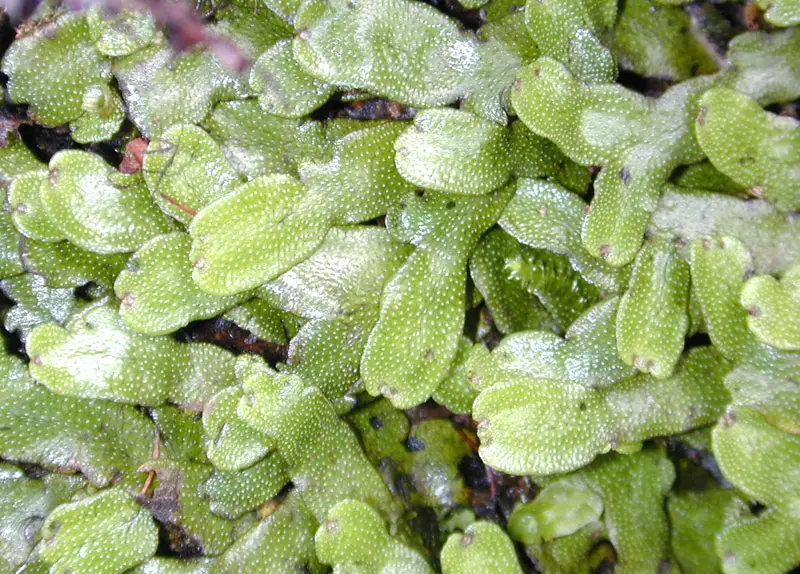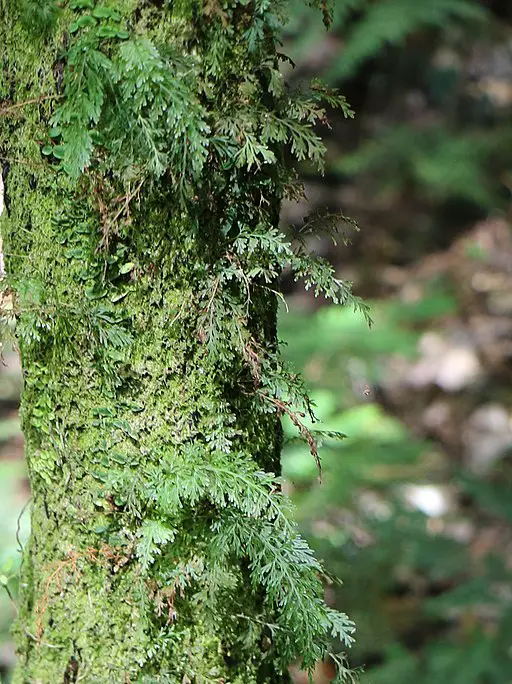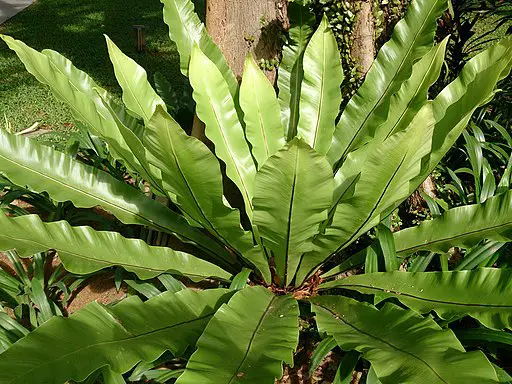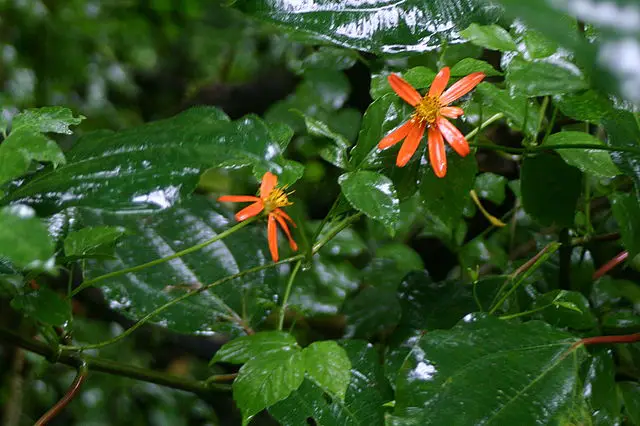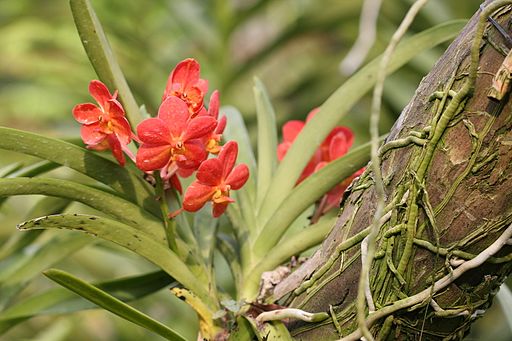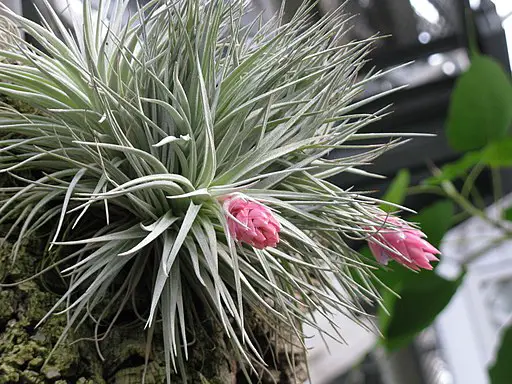What are Epiphytes?
Where are they found?
What animals eat them?
What are Epiphytes?
The term "epiphytes" refers to a group of organisms that grows on the surface of other plants. However, some epiphytes can also grow on rocks and other surfaces that provide support. While some epiphytes cause damage to the plant, the majority are not parasites. Rather, they generally depend on the plant for support and not for their nutritional needs.
There are different types of epiphytes which include fungi, vascular plants, and algae among others. Depending on the type of epiphytes, some complete their life cycle on other plants while others only depend on other plants for part of their life cycle. As such, they first grow on land before relying on other plants for support.
Benefits of Epiphytes
Epiphytes have several advantages in nature which include:
· Contribute to canopy which helps control soil erosion and are also involved in the water cycle
· Contribute to the overall biomass (especially in forests) and nutrient cycling
· Are a source of food for various organisms
· Provide a niche habitat for some organisms/animals
Epiphytes can be divided into three main groups that include:
Holo-epiphytes - Holo-epiphytes include epiphytes like orchids that complete their life cycle on other plants (e.g., on trees and shrubs). As such, they do not come into contact with the ground.
These epiphytes possess special structures that allow them to not only attach to the host plant, but also absorb water and the necessary nutrients/minerals required for growth.
Hemi-epiphytes - Unlike holo-epiphytes, hemi-epiphytes may spend part of their life cycle on the host plant before they ultimately reach the ground. These include some vines that gradually develop to reach the group and develop roots that penetrate the soil.
Because they possess vascular tissue, they can absorb water and other nutrients from the soil through the roots.
Proto-epiphytes - Proto-epiphytes include epiphytes like Peperomia which rely on the host plant for nourishment. This is because they lack specialized features that allow other epiphytes to be more independent of the host plant.
Some epiphytic fungi may also be included in this group.
Where are they found?
Generally, epiphytes can be found wherever other plants grow. As such, they can be found in different regions throughout the world.
As already mentioned, there are different types of epiphytes which are divided into two major groups namely, vascular epiphytes (20 to 35 percent of all epiphytes e.g., some grass) and non-vascular epiphytes (e.g., lichen and moss).
They are further divided into several groups that are found in given environments.
These include:
Bryophytes
Bryophytes include hornworts, liverworts, and mosses plants. They are non-vascular plants and therefore lack xylem and phloem (the vascular system) typically found in higher plants. Moreover, they lack true roots and lignin which provides support for elongated plants.
Most bryophytes have been shown to be epiphytes and therefore grow on the surface of other plants, especially trees.
Epiphytic Mosses - Mosses are simple plants that grow closely together to form dense mats in damp places. They are flowerless and therefore reproduce by forming and dispersing spores.
Epiphytic species can be found in cool coastal forests and cool moist forests in the tropics and the template zone. In these regions, these species can be found growing on the branches, trunk, and on the surface roots where they form the forest floor cover.
Although they are non-vascular, they are able to absorb water through their small, simple leaves from their surroundings (they grow in damp areas). Nutrients, which include tree debris, are absorbed directly through the body given that they do not have roots.
Epiphytic liverworts - Like Mosses, liverworts are simple, non-vascular plants. They lack flowers and thus reproduce by forming and dispersing spores allowing them to cover a wide area. While some can grow on decaying plants in shaded habitats, others grow on the bark of large trees.
In the temperate zone, they are found in high abundance in rainforests which provides them with the conditions they need to thrive. On the bark of large, old trees, they are able to access sunlight (for photosynthesis), water, and nutrients for growth.
Hornworts - Hornworts are bryophytes that are characterized by an elongated sporophyte. They are widely distributed in the tropics and warm temperate areas where they grow in soil and rocks.
Here, only one genus, Dendroceros, has been shown to be epiphytic, growing on trees and leaves of some plants.
Hymenophyllaceae
Hymenophyllaceae is a family that consists of over 600 species of filmy ferns. Although they are flowerless, like some of the other epiphytes, they are characterized by thin leaves (about one cell thick which makes many of them appear translucent) and some of the species have well-developed roots.
Most of these ferns also have thin, threadlike stems that contain vascular tissue through which water and nutrients are transported.
Members of this family are especially abundant in humid tropical forests where they have been shown to exhibit diversity in terms of the habitat they occupy.
For instance, while some are complete epiphytes and complete their life cycle on other plants (e.g., trees), others are hemi-epiphytic and therefore spend part of their life in the soil.
As well, some maintain their relationship with the group but still depend on other plants for support. As such, they remain rooted to the ground, but creep on other plants as they grow.
According to statistics, about 60 percent of Hymenophyllaceae are epiphytic and can be found in hygrophilous forests.
As mentioned, some of the ferns may first grow on land before continued growth on trees while others remain grounded in the soil as other plants/trees support their growth in height.
While some of the species can absorb water through the leaves, others use their roots to obtain water and distribute it in all parts of the plant.
Regardless, support from other plants/trees allows them to grow vertically and access sunlight for photosynthesis.
* Some ferns may be classified as shade epiphytes. This is because they mostly grow on the lower parts of tree trunks. This allows them to climb high enough to escape the shade caused by much larger plants in their surroundings.
Bird's Nest Fern
As the name suggests, this plant resembles the nest of a bird. Also known as Asplenium nidus, bird's nest fern can be found in the tropical and temperate parts of Australia, Southeaster Asia, Africa, and Hawaii, etc. characterized by relatively high humidity and indirect sunlight.
Like some of the other ferns, bird's nest ferns are green, flowerless, and produce by forming spores. However, they have larger leaves and lack a stem.
In the paleotropics, ferns like Asplenium bird’s nest ferns grow on the surface of trees (branches and bark of the trees) which not only contributes to plant biodiversity and biomass, but also provide a habitat for many invertebrates (as many as 27 orders of arthropods).
Animals like bats have been shown to roost in these epiphytes. Therefore, bird’s nest ferns have many advantages as epiphytes in many regions.
In the Malaysian rainforest, bird's nest ferns can be found on different types of trees. Growing on the tree trucks (on the tree bark) as well as branches, they are well-positioned to intercept and retain various debris including falling leaves, etc.
As they decompose, the debris provides the nutrients that the epiphytes need to continue growing. Using the nutrients, as well as the water they obtain from their surroundings, some of these epiphytes can grow to be over 200kg in weight (wet weight).
As they continue growing, they provide a niche habitat for a range of insects and small animals.
* While these epiphytes create a microhabitat for various organisms, these organisms (which include insects, etc.) supply the epiphytes with nourishment when they die.
* In addition to leaves and other debris, the bird’s nest epiphytes also trap dust and soil which contributes to their establishment on tree branches and tree trunks.
Epiphytic Vines
Vines are some of the most common epiphytes in different parts of the world. While there are short vines and others that form small bushes, most vines are characterized by thin stems that allow them to climb as they grow on other plants.
Unlike some of the other epiphytes, vines have roots in the soil. However, because of the thin stem/branches, they cannot grow upright without any support. Like some of the other epiphytes, vines, both woody and herbaceous vines, are classified as vascular epiphytes and thus have the vascular tissue involved in the transportation of water and nutrients.
Vines are commonly found in tropical rain forests (e.g., the Amazon rain forest in Peru). These regions are characterized by rains throughout the year which is responsible for the dense canopies of vegetation. These include very long trees (giant trees) that tower over all the other vegetation.
Given that vines have thin and weak stems that make it difficult for them to grow upright, they have to rely on other plants, especially trees, to grow upright and access sunlight for photosynthesis. In these regions, vines use special roots to attach to the tree trunks as they grow vertically climbing up the tree.
Unlike the typical basal roots, these roots originate from the stem which allows the vines to properly attach to the tree trunk as they ascend up the tree. Depending on the type of vine, this growth may be several centimeters or meters long.
Whereas herbaceous vines only grow a few centimeters or meters long, woody vines tend to be much longer and ascend much higher.
For vines like Lianas, growth starts on the ground without any support. At this stage of their growth, they resemble the typical shrubs. As they continue growing, however, they attach to the neighboring trees in order to reach the upper canopy.
While the stems are thin, given that the plant depends on other vegetation for support, the leaves are numerous in number and relatively wider. This allows them to release excess water into the environment but also trap enough energy (from the sun) for photosynthesis.
* Some vines may begin their growth on trees and grow towards the ground where they form roots that penetrate the soil.
Flowering Epiphytes
Epiphytic plants only make up about 10 percent of the total vascular plants.
Also known as angiosperms, some of the most common epiphytic plants include:
Orchids - Orchids are classified as mat epiphytes because they form patches (mats) on the branches (inclined or horizontal branches of trees) of higher vegetation/plants like trees. As well, they can grow on the stems and branches of shrubs in tropical and subtropical regions.
On the branches and stems of trees and shrubs, young epiphytes have been shown to first depend on a relationship with mycorrhizal fungi to develop. During this stage, the fungus can be found in the roots of the plant where they promote water and nutrient absorption required for growth.
Some epiphytic orchids are characterized by short and thick stems known as pseudobulbs. These types of orchids are especially common in regions with changing weather patterns and allow the plant to save water. Moreover, they are parts of the plant in which minerals and other nutrients are stored.
In addition to thickened stems, these orchids also possess specialized roots (meager roots) that allow them to not only absorb and store water, but also firmly attached to other plants.
* About 68 percent of vascular epiphytes are orchids.
* Orchids belong to a group of epiphytes referred to as holo-epiphytes. Unlike hemi-epiphytes, these epiphytes spend their entire life cycle on other plants and therefore never come in contact with the ground.
* Like other higher plants, epiphytic orchids reproduce through pollination which allows them to produce seeds.
Tillandsia - Tillandsia is a genus that consists of more than 500 species of tropical plants commonly found in parts of North and South America. Like orchids, these epiphytes are flowering plants that produce seeds.
Using their specialized roots, they are able to anchor themselves to the branches and stems of other higher plants, especially trees. In addition to the specialized roots that allow them to firmly anchor to the stem and branches of other plants, Tillandsia are also characterized by fine outgrowths on their leaves known as trichomes.
These hair-like structures allow the plants to absorb water and nutrients from the air. For this reason, the roots are not necessarily used for water absorption.
Because they use trichomes to take in water and nutrients from the air (mist, dew, fog), they are able to survive hot and dry environments. Here, trichomes have also been shown to play an important role in deflecting some light off the epidermis and thus avoid losing too much water.
* By growing on the branches and stem of trees and other higher plants, Tillandsia are not only exposed to sunlight required for photosynthesis, but also to more nutrients from the air (in dust) and other debris from the plant.
Like bird's nest ferns, these epiphytes also develop in a manner that allows them to effectively trap debris and other material that serve as a source of nutrients.
* As mentioned, Tillandsia are flowering plants and thus produce seeds for reproduction. These seeds are easily blown away by wind allowing the plant to grow on many other plants.
Fungi
Fungi is a kingdom that consists of eukaryotic organisms. They are unable to make their own food and are therefore classified as heterotrophs. Fungi that grow on the surface of other plants are known as epiphytic fungi. Those that grow inside the tissue of plants are known as endophytes.
As mentioned, the other epiphytes are capable of photosynthesis. As such, they absorb water and nutrients/minerals from the air to manufacture their own food. In some cases, however, they may use nutrients from the plant, in the form of debris, during growth.
Fungi, on the other hand, heavily rely on the plants they are attached to for nutrition given that they are unable to form their own food. However, they do not cause significant damage to the plant.
What animals eat them?
By growing on other plants (e.g., trees and shrubs, etc.), epiphytes directly contribute to canopy diversity and plant biodiversity in different environments across the world. While they can be found throughout the world, there are different types of epiphytes that grow on different parts of the host plants (leaves, stem, branches, basal roots, etc.).
Here, they create niche habitats for different types of organisms and are even a source of food for some animals.
Bryophytes: some bryophytes can be poisonous to many animals. However, there are some animals that feed on these organisms.
Mosses - Pikas, reindeer, and caribou have been shown to obtain some nourishment from moss. However, they have very low nutritional value and these animals also have to consume other plants to get the nutrients they need to survive.
Liverworts - Like moss, liverworts have low nutritional value. However, some animals like caribou and mice among a few other animals have been shown to eat them from time to time.
Hornworts - Unlike liverworts and moss, hornworts are a source of food for several types of fish.
Filmy ferns - Filmy ferns serve as a source of food for a variety of small animals such as rabbits and some deer, insects, and some worms.
Epiphytic vines - Vines serve as a source of food for various species of birds and herbivores. These animals play an important role in the dispersal of seeds.
Orchids - Orchids are holo-epiphytes and serve as a source of food for many small animals and insects including snails, caterpillars, and grasshoppers among others.
Return from What are Epiphytes? to MicroscopeMaster home
References
Fernanda Reinert. (2008). Epiphytes.
Gerhard Zotz. (2005). Vascular epiphytes in the temperate zones–a review.
Tom Maurice Fayle, Farnon Ellwood, Edgar Turner, and Jake L Snaddon. (2008). Bird’s nest ferns: islands of biodiversity in the rainforest canopy.
Yagya Adhikari, Anton Fischer, and Hagen S. Fischer. (2016). Epiphytic orchids and their ecological niche under anthropogenic influence in central Himalayas, Nepal.
Links
https://www.sciencedirect.com/topics/agricultural-and-biological-sciences/bryophyte
Find out how to advertise on MicroscopeMaster!
